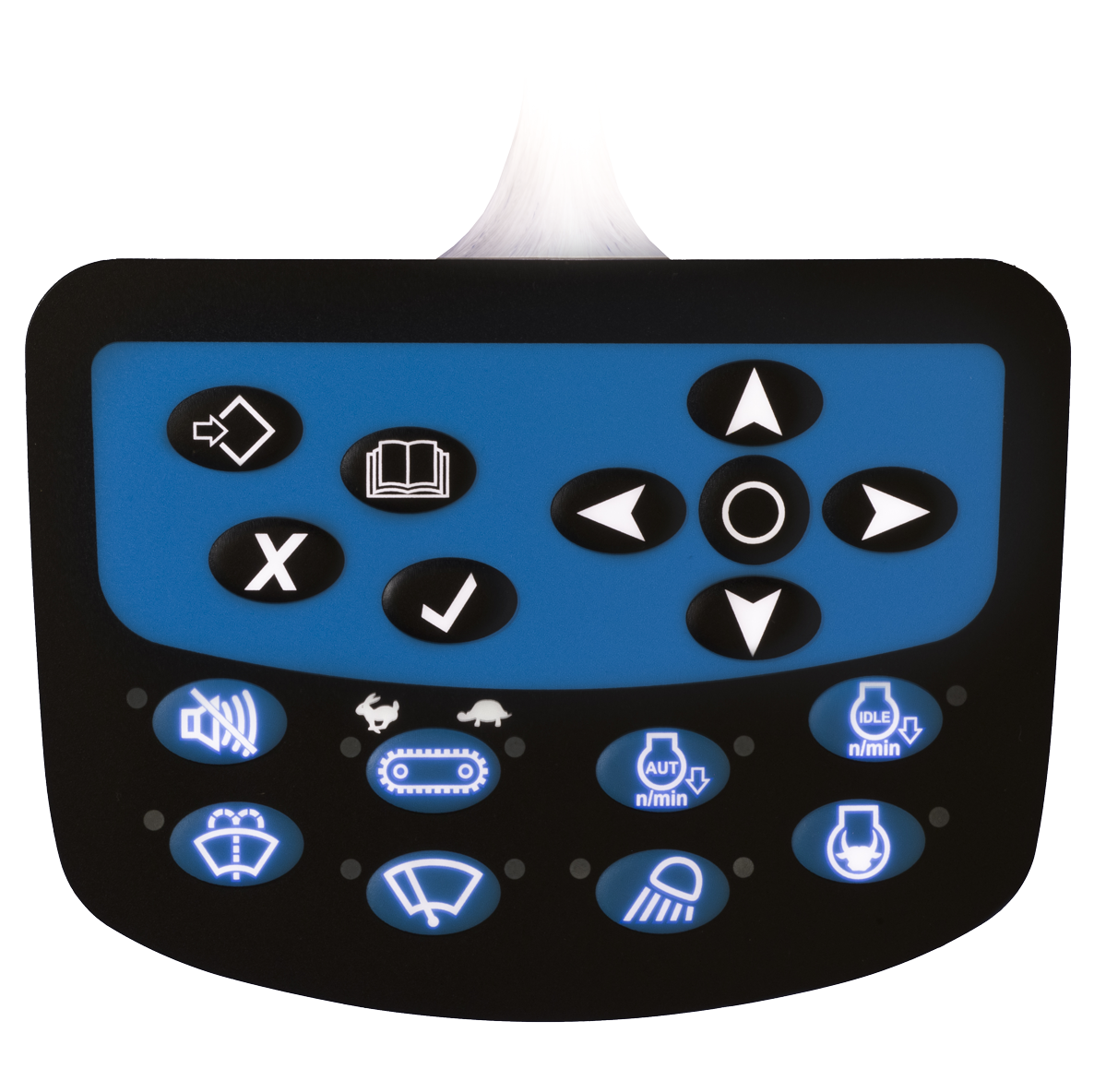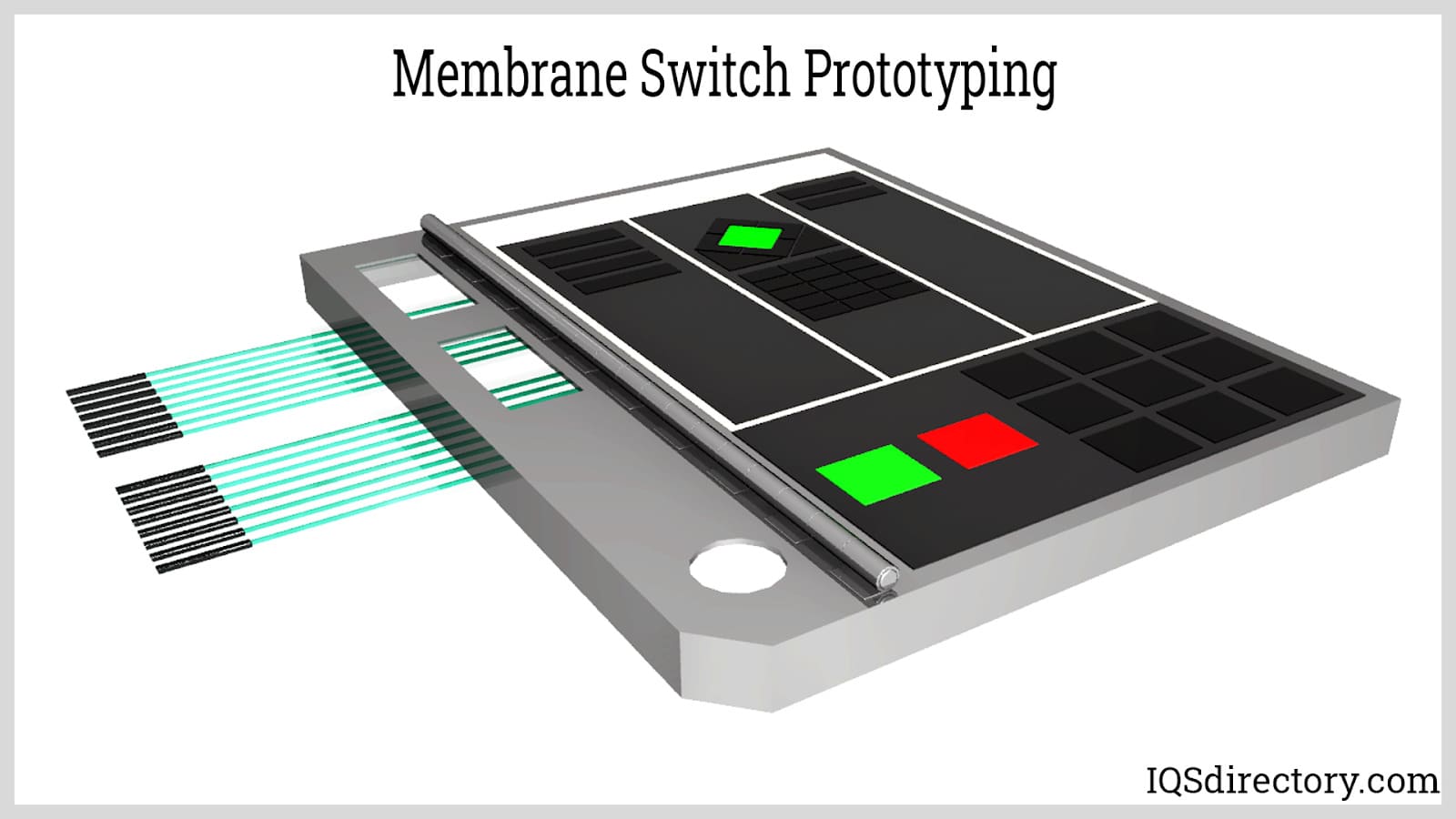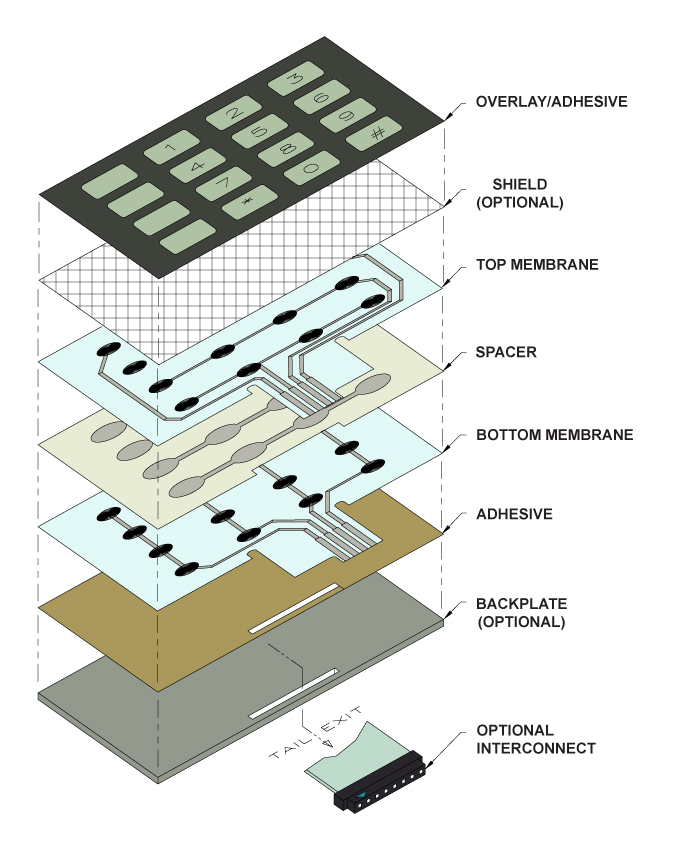Membrane Layer Switch Over Modern Technology: The Trick to Reputable and Economical User Interfaces
Membrane switch technology has arised as a pivotal element in the style of customer interfaces, supplying both reliability and cost-effectiveness throughout a varied array of applications. As we explore the complex advantages of membrane layer buttons, their potential for technology increases concerns concerning future applications and advancing trends.
Comprehending Membrane Layer Switch Over Technology
Membrane switch modern technology is a commonly used interface solution in different digital devices, offering a seamless mix of performance and style. This technology integrates multiple layers of products, usually consisting of a visuals overlay, spacer layer, and a circuit layer. The graphic overlay shows the interface components, while the spacer layer divides the circuit layer from the overlay up until a user turns on a switch.
When pressure is put on the overlay, the circuit layer completes the electrical circuit, sending out a signal to the tool. This device enables numerous setups, including responsive responses and backlighting options, improving individual communication. Membrane layer buttons are typically produced utilizing durable products such as polyester or polycarbonate, making sure durability and resistance to ecological aspects like moisture and dirt.
The versatility of membrane switches over allows their application in diverse sectors, consisting of clinical gadgets, consumer electronic devices, and industrial controls. Their small style enables assimilation into space-constrained environments, providing an effective interface without jeopardizing visual appeal. Recognizing the details of membrane button modern technology is important for makers and developers seeking to develop reliable and efficient human-machine user interfaces.
Trick Advantages of Membrane Layer Switches
While numerous interface options exist, membrane changes deal distinctive benefits that make them a recommended choice in various applications. One of the primary advantages is their sturdiness; membrane layer switches are made to hold up against severe ecological problems, including dampness, dust, and temperature level fluctuations, ensuring resilient performance. This resilience dramatically lowers the need for regular substitutes, therefore lowering overall maintenance costs.

Additionally, membrane buttons are light-weight and small, making them ideal for applications where room is limited. Their low-profile layout adds to a smooth look without compromising capability.
Cost-effectiveness is additionally a notable benefit, as the production process for membrane layer changes tends to be more economical compared to conventional mechanical buttons. This affordability, combined with their integrity and ease of installation, placements membrane layer switches over as a functional option for a wide variety of sectors seeking efficient and reliable user interfaces.
Applications Throughout Various Industries
Just how do membrane switches adjust to the diverse demands of various industries? Membrane layer switch modern technology is increasingly identified for its adaptability, making it suitable for a wide variety of applications throughout multiple fields. In the medical area, membrane layer buttons are utilized in analysis equipment and client surveillance devices, where their longevity and ease of cleansing are vital for keeping health standards. The auto market uses these switches in dashboards and control panels, offering a streamlined visual while guaranteeing easy to use procedure.
In customer electronics, membrane layer switches provide a compact solution for remote controls and home appliances, improving individual experience with instinctive design. Additionally, the industrial industry leverages membrane layer buttons for equipment control panels, benefiting from their resistance to severe environments, such as moisture and dust.
Military and aerospace applications also make use of membrane switches for their reliability and ability to endure severe problems, making sure linked here operational effectiveness in critical scenarios. Moreover, the food and drink market takes on these switches for automated systems, where hygiene and simplicity of procedure are paramount. Ultimately, membrane layer switches are tailored to fulfill the unique needs of each industry, verifying their essential function in contemporary technology interfaces
Layout and Customization Options

In the realm of membrane switch modern technology, layout and customization choices play a pivotal duty in enhancing functionality and individual interaction. These switches can be customized to satisfy particular operational requirements and aesthetic choices, making them versatile elements in different applications.
One of the main personalization alternatives is click for more the layout of the switch itself, which can be developed to fit distinct interface and ergonomic factors to consider. By readjusting the shape, dimension, and plan of switches, makers can produce intuitive layouts that assist in convenience of use. Furthermore, the incorporation of different shades and visuals overlays enables branding and boosted visibility, making sure that customers can quickly recognize functions.
Moreover, membrane switches can be engineered with various tactile comments systems, such as increased switches or audible clicks, to boost the individual experience. Different products can likewise be chosen for sturdiness and environmental resistance, dealing with aspects such as wetness, temperature level changes, and chemical exposure.
Inevitably, the extensive design and personalization choices available in membrane layer button innovation equip businesses to develop customized remedies that not just satisfy useful needs yet likewise straighten with their branding and functional requirements.

Future Fads in Membrane Buttons
As membrane button modern technology remains to evolve, future trends are increasingly concentrated on enhancing individual experience and integrating advanced functionalities. One considerable pattern is the integration of touch-sensitive and capacitive innovations right into standard membrane switches. This growth permits more instinctive user interfaces, supplying tactile comments while maintaining a her explanation sleek design.
One more emerging trend is making use of eco-friendly materials, driven by the growing demand for sustainable production practices. Producers are looking for to lower their carbon footprint by using recyclable substratums and low-impact inks, straightening with international sustainability objectives.
In addition, the rise of the Web of Things (IoT) is motivating the consolidation of clever features right into membrane layer switches. Improved connectivity choices will allow tools to interact with each various other, permitting smooth combination right into more comprehensive systems.
Additionally, innovations in printing innovations, such as electronic printing, are enabling higher layout flexibility and modification. This allows suppliers to produce complex designs and vibrant shades cost-effectively.

Final Thought
In final thought, membrane layer switch innovation stands for a vital development in customer interface design, using considerable benefits in resilience, modification, and cost-effectiveness. As advancements continue to emerge, particularly in touch-sensitive interfaces and sustainable materials, the capacity for membrane changes to enhance user experience and performance continues to be promising.